Who are the leading AI platforms for developing voice assistants?
Explore the top artificial assistant platforms for building advanced voice experiences, featuring real-time AI, robust security, and smooth integration.

Ranjith M S
Updated on
December 26, 2025 at 11:31 AM
AI voice assistants have become essential to modern business, powering customer support, automating tasks, and enabling voice-driven apps across industries. As the need for faster, scalable, and more natural voice experiences grows, businesses are turning to platforms that go far beyond basic command recognition.
This shift is clear in the numbers: the global voice assistant application market is projected to reach $11.2 billion by 2026, with over 8 billion voice assistants expected to be in use worldwide. As more companies rely on AI-powered voice tools for engagement and efficiency, choosing the right development platform is more important than ever.
This guide breaks down the top AI platforms for creating voice assistants — highlighting their core strengths, ideal use cases, and pricing — so you can make a smart, future-ready choice.
What is an AI Voice Assistant?
An AI voice assistant is a software-based tool that processes spoken language to carry out tasks or provide information, acting as a digital intermediary between people and technology. It listens to voice commands, interprets the intent behind what’s said, and responds with relevant actions or answers. These assistants can control smart devices, retrieve web-based data, send messages, set reminders, or interact with other digital services, all through natural conversation.
For those who build digital experiences, manage customer interactions, or design automated workflows, AI voice assistants offer a hands-free way to engage users and streamline operations. They rely on advanced speech recognition, natural language processing, and sometimes machine learning to improve accuracy over time. These systems can be embedded in apps, websites, or hardware, making them accessible across devices and platforms.
Voice assistants blend into business environments with surprising ease. They subtly expand what’s possible, often before traditional methods catch up.
What Can AI Voice Assistants Do?
AI voice assistants, sometimes called artificial assistants, can perform a wide range of practical functions by processing spoken requests and executing tasks. Here’s what they do, grounded in real-world application:
Voice-Controlled Interaction
Users can interact with technology using voice commands, making digital experiences hands-free and accessible. This feature is especially valuable for content creators and businesses looking to streamline workflows and improve accessibility.
Automated Information Retrieval
Artificial assistants quickly fetch answers, data, or content from databases or the web. This capability supports content creators who need fast access to information and businesses looking to provide accurate responses to customers.
Task Automation and Scheduling
Routine tasks such as setting reminders, scheduling appointments, and sending notifications are handled automatically. This saves time for professionals managing busy schedules or coordinating multiple projects.
Customer Support Automation
Artificial assistants respond to customer inquiries, troubleshoot issues, and process requests around the clock. This reduces the workload for support teams and ensures customers receive timely assistance.
Transaction and Service Processing
Voice commands allow users to make purchases, send messages, book services, or place orders. This speeds up e-commerce operations and simplifies service delivery.
Personalization and Recommendations
AI learns user preferences to offer personalized suggestions. This enhances user engagement and helps marketing teams deliver more relevant content.
Integration with Third-Party Tools
Artificial assistants connect with external apps and platforms, expanding their functionality. Developers can embed these assistants into products to automate workflows and support multi-channel strategies.
Accessibility and Inclusivity
Voice assistants provide hands-free access to technology, making digital products more inclusive for users with disabilities or those who prefer voice interaction. This supports compliance with accessibility standards and broadens audience reach.
The true potential of voice assistants becomes clear when their abilities meet real business needs. A handful of platforms stand out for how they turn that potential into practical, everyday results.
Here’s an interesting read: The Future of AI Voice-Driven Interactions and Their Impact
Best AI Voice Platform for Developing Artificial Assistants
Building an artificial assistant requires the right technology stack and platform. The following AI voice assistant platforms provide developers with the tools needed to create sophisticated, real-time conversational experiences. Each platform offers unique capabilities that support different development needs, from rapid prototyping to enterprise-grade deployment.
1. Smallest.ai Voice Agents
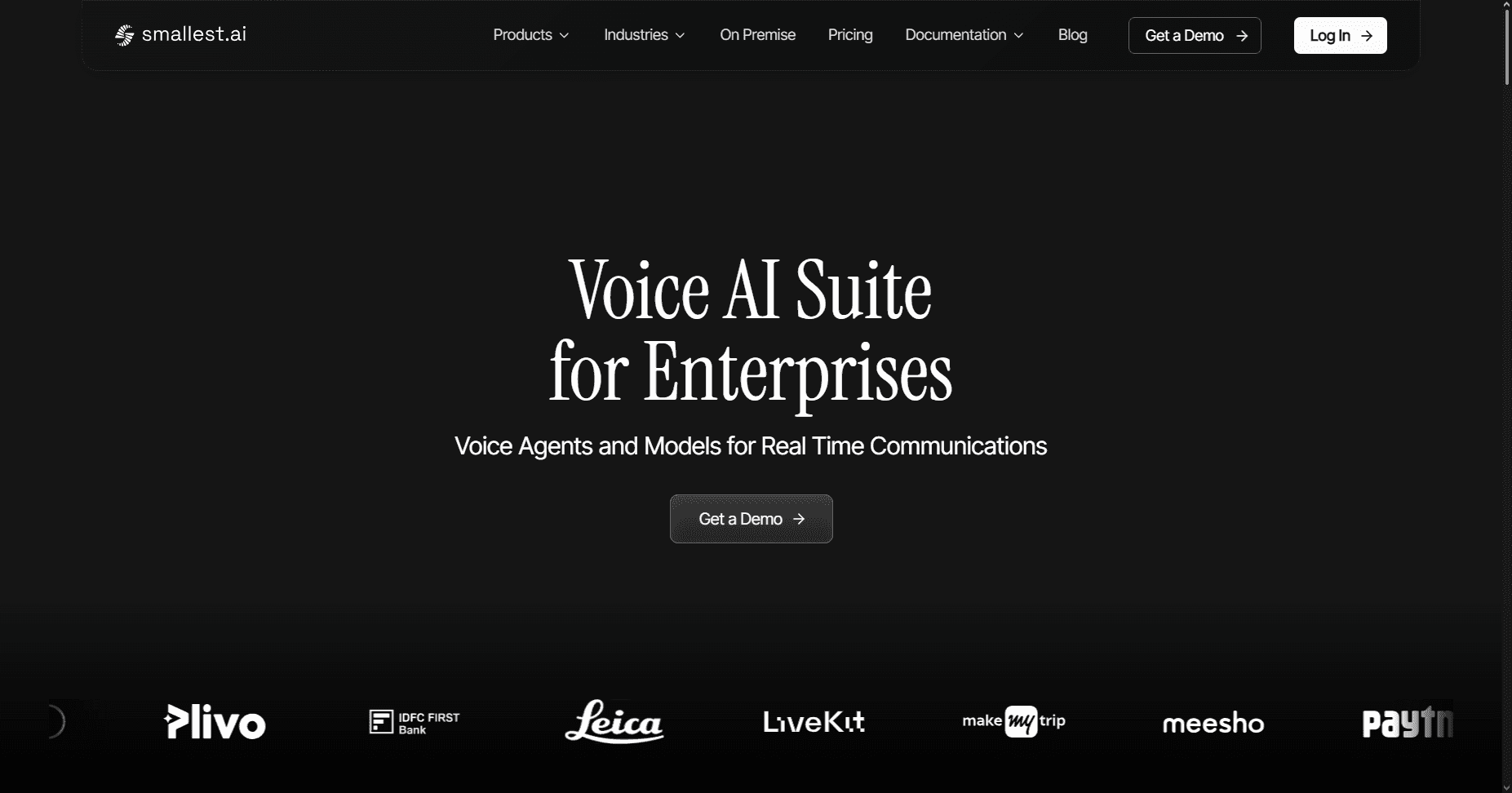
Smallest.ai was created to address the need for ultra-low latency voice AI in enterprise environments, particularly for contact centers and real-time applications. Its development was driven by the demand for fast, high-quality voice interactions that could handle complex, multi-step conversations across multiple languages, making it a practical choice for global businesses
Key Features:
Real-time AI voice agents with sub-100ms latency for conversational applications.
Enterprise-grade security compliance including SOC 2 Type 2, HIPAA, and PCI standards.
Custom hardware deployment options with on-premises infrastructure control.
Handles thousands of parallel calls with zero lag and automatic scaling.
Advanced analytics dashboard for call logs, conversation insights, and performance metrics.
Multi-language voice models with support for complex numerical data processing.
Python, Node.js, and REST API integration capabilities.
2. OpenAI GPT-4
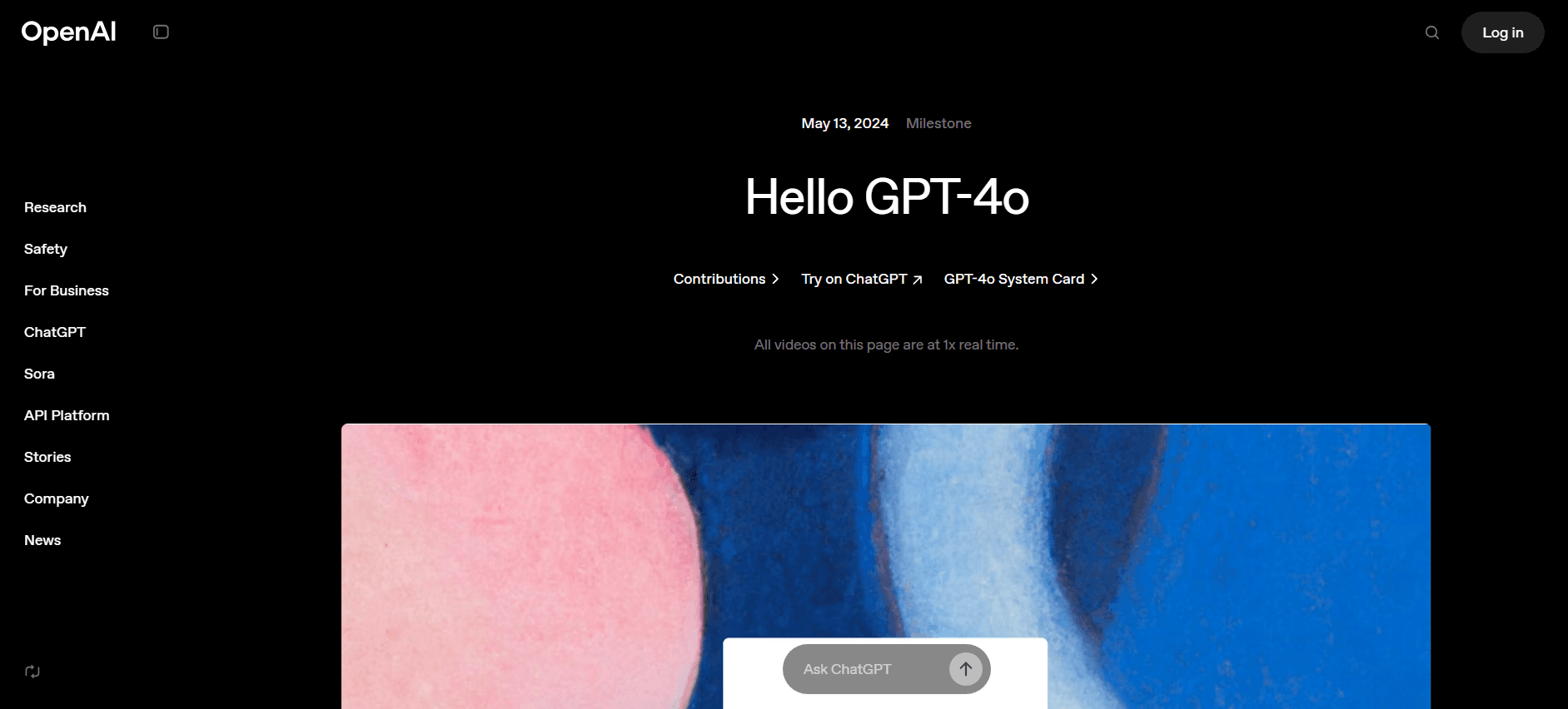
OpenAI introduced GPT-4 as part of its mission to advance conversational AI beyond text-only models. This platform emerged to break the limitations of traditional voice pipelines, allowing direct audio processing to better capture tone and context, and to enable real-time, emotionally aware conversations.
Key Features:
Direct audio processing without speech-to-text conversion maintaining emotional context.
Nine distinct voice options with customizable tone and character settings.
Multimodal input processing combining text, audio, and visual data.
Advanced voice mode for real-time conversations with emotional adaptation.
128,000 token context window supporting extensive document analysis.
Built-in tool selection automatically choosing appropriate functions for tasks.
3. Amazon Alexa Voice Service (AVS)

Amazon launched Alexa Voice Service to bring its smart assistant technology to third-party hardware and software developers. The goal was to extend Alexa’s voice-first experience beyond Amazon’s own devices, enabling a wider ecosystem of voice-enabled products and services.
Key Features:
Cross-platform C++ SDK supporting multiple hardware architectures.
Modular component system for customized device integration.
Extensive third-party development tool ecosystem.
Sample applications and testing frameworks included.
Direct cloud connectivity for instant voice responses.
Smart home device control and automation capabilities.
Enterprise-grade security requirements and compliance standards.
4. Google Dialogflow
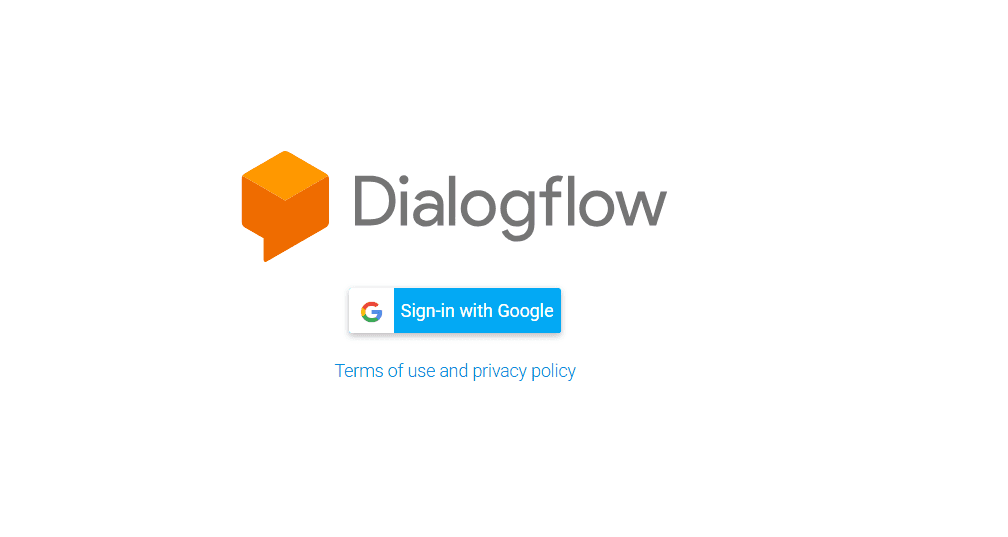
Google developed Dialogflow to simplify the creation of conversational agents for developers and businesses. It was built to take advantage Google’s strengths in natural language processing and machine learning, making it easier for anyone to build and deploy voice and chat-based interfaces
Key Features:
Integration with Google's latest Gemini models for improved conversation quality.
No-code agent development with visual conversation flow design.
30 new voice options with configurable emotions and pronunciation.
Prebuilt agents for common use cases including booking and shopping assistance.
Real-time streaming video support for visual conversation context.
Webhook integration for external service connectivity.
Multi-environment deployment with staging and production versions.
5. ElevenLabs Voice AI
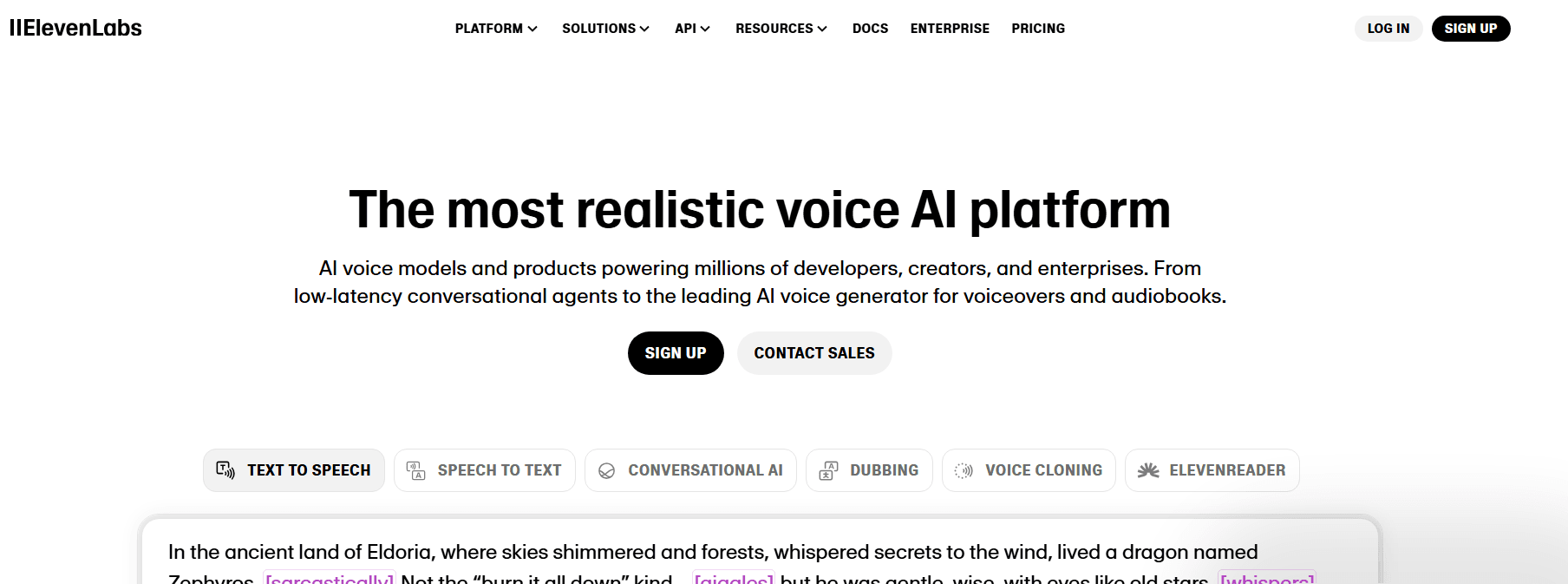
ElevenLabs was founded to push the boundaries of voice synthesis and cloning, aiming to make AI voices more realistic and expressive. The platform was designed to empower both creators and enterprises with tools for custom, high-quality voice generation.
Key Features:
Ultra-realistic voice cloning from minutes of audio samples.
Over 5,000 voices with 70+ language support.
Emotional expression control through inline audio tags.
Integration with popular tools like Google Calendar, Slack, and Linear.
Enterprise-grade security with HIPAA compliance and secure MCP architecture.
Real-time voice generation with ultra-low latency.
Custom voice model training for consistent brand voices.
6. Microsoft Azure Speech Services
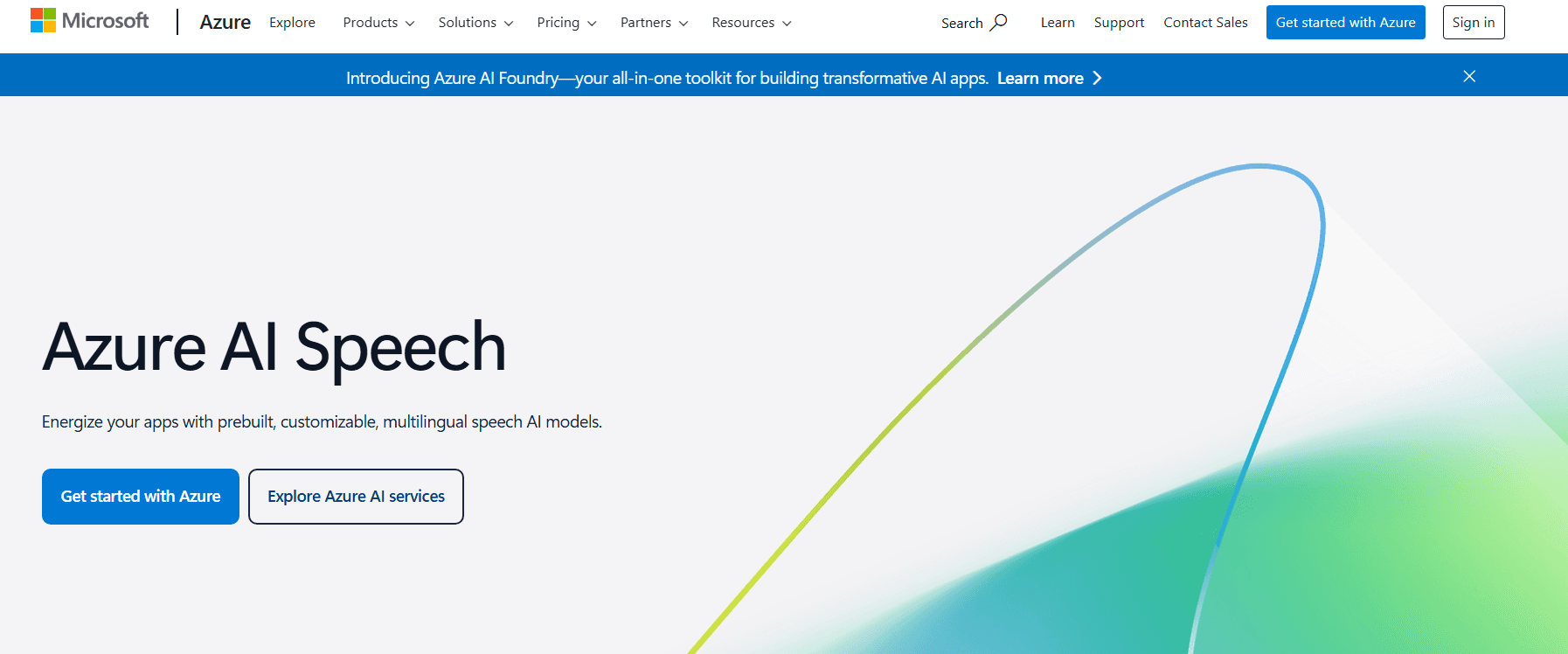
Microsoft created Azure Speech Services to provide enterprise-grade speech capabilities as part of its cloud platform. The service was developed to help organizations integrate advanced speech recognition and synthesis into their own applications, with a focus on flexibility, security, and global reach.
Key Features:
Real-time and batch speech transcription with high accuracy.
Speaker diarization identifying multiple speakers in conversations.
Custom speech model training for domain-specific terminology.
Edge deployment through containers for on-premises processing.
Multi-language support with automatic language detection.
Integration with Azure ecosystem and enterprise tools.
Voice agent capabilities for automated customer service applications.
Pricing Table:
Platform | Free Tier | Basic | Business | Enterprise | Usage Metrics |
|---|---|---|---|---|---|
Smallest.ai | Free trial available | $49/month | $1,999/month | Contact Sales | TTS: $0.03/minute Voice Cloning: $0.08/minute |
OpenAI GPT-4 | Limited access | $20 / month | $200 / month | Contact Sales | Audio models: $0.015/minute Realtime: $5.00-$20.00 per 1K tokens |
Amazon Alexa | Free for developers | Skills revenue sharing | Alexa Plus: $19.99/month (Free for Prime members) | Custom pricing | Developer monetization through engagement rewards |
Google Dialogflow | $600 credit (12 months) | N/A | N/A | Custom pricing | Audio I/O: $0.001/second (CX) ES: $0.0065 per 15 seconds |
ElevenLabs | 10K credits/month | $5/month 30K credits/month | $22-$99/month 100k credits/month | $330-$1,320/month 500k credits/month | Per credits/minute usage |
Microsoft Azure Speech | 5 hours STT 0.5M characters TTS | N/A | N/A | Commitment tiers available | STT: $0.36-$1.20/hour TTS: $15-$30 per 1M characters |
Top platforms set the stage for artificial assistants to perform at their best. The real impact emerges when you see how these tools change the way businesses respond and connect.
Benefits of an AI Voice Assistant
Voice assistants have quietly redefined what it means to interact with technology, slipping into daily routines with little fanfare yet making a lasting impact. Their real power lies not just in automating tasks, but in how they adapt to the rhythms of human conversation and need, often before we even notice the shift
Instant Task Execution: They respond to spoken requests and complete tasks quickly, such as finding information, setting reminders, or controlling devices. This reduces the time spent on routine activities and keeps workflows moving.
Hands-Free Operation: Users interact with technology through voice, so there’s no need to type or touch screens. This is especially useful when multitasking or when hands are occupied, and it makes digital tools accessible to more people.
Automated Customer Support: They handle common questions, process orders, and guide users through troubleshooting. They provide consistent answers and free up staff to focus on complex issues, improving service quality.
Personalized User Experiences: Voice assistants remember user preferences and past interactions, offering suggestions and responses that fit individual needs. This makes every interaction feel relevant and increases user satisfaction.
Integration Across Platforms: Artificial assistants connect with apps, websites, and smart devices, allowing users to control multiple services from a single voice interface. This expands what users can do and supports more complex workflows.
Scalability for High Demand: These systems handle thousands of interactions at once, making them suitable for organizations with large user bases or high call volumes. They maintain consistent performance even during peak times.
Improved Accessibility: Voice-based access to digital tools benefits individuals with disabilities or those who prefer alternative input methods. This broadens audience reach and supports inclusivity.
Data Collection and Insights: By tracking user interactions, voice assistants provide valuable data on preferences, common questions, and pain points. This helps organizations refine their offerings and better address user needs.
Voice assistants offer clear advantages to business teams and their customers. Choosing the right platform determines how effectively these benefits translate into real-world results.
You might want to read this: Why Insurance Companies Need Voice Agents in 2025: The Complete Analysis
Choosing the Right AI Platform for Developing Artificial Assistants
Selecting the right platform for artificial assistants can feel like fitting a key to a lock, only the right match opens up real potential. When the technology aligns with your aims, what once seemed complex becomes a natural extension of your vision and workflow.
1. Define Core Use Cases
List the main tasks your artificial assistant will handle, such as answering customer questions, scheduling, or controlling smart devices. This narrows down which platforms can actually deliver for your needs.
2. Assess Language and Voice Support
Pick a platform that supports the languages your users speak and offers high-quality voice responses. For example, smallest.ai supports 16+ global languages and delivers fast, realistic voice interactions.
3. Check Integration Options
Look for platforms with strong APIs and SDKs (like Python or Node.js) that make it easy to connect your artificial assistant to other tools, websites, or business systems.
4. Review Security and Compliance
If your project involves sensitive data, confirm the platform meets industry standards such as SOC 2, HIPAA, or PCI. Some platforms allow on-premises or private cloud deployment for added control.
5. Test Scalability and Performance
Try out the platform under real-world loads to see if it can handle your expected user or call volume. Automatic scaling and low-latency responses are important for smooth operation.
6. Compare Pricing and Support
Understand the platform’s pricing model, whether it charges per call, per API request, or by subscription. Compare this with your budget and check the quality of technical support and documentation.
7. Start with a Demo or Free Trial
Use free trials or demos to test voice quality, integration, and ease of development before committing to a platform.
Conclusion
By now, you’ve seen how varied and capable today’s leading platforms for artificial assistants really are. Each offers unique strengths, whether speed, language support, or enterprise readiness, that can make a tangible difference in how your business engages with technology and people.
This overview gives you a clearer sense of direction for choosing a platform that not only meets your current needs but also adapts as those needs change. You’re better equipped to ask the right questions and match your ambition with the right tools for building voice experiences that leave a mark.
Smallest.ai stands out for enterprise contact centers and real-time applications, delivering ultra-low latency, global language support, and secure, scalable solutions that help automate repetitive tasks, improve customer satisfaction, and handle high call volumes efficiently.
Ready to see the difference for yourself? Get a free demo
FAQs About Artificial Assistants
1. Can artificial assistants handle multiple languages in the same conversation?
Some advanced artificial assistants can switch between languages within a single interaction, recognizing and responding appropriately to each language used by the user, ideal for multilingual teams or global customer bases.
2. How do artificial assistants protect sensitive information during calls?
Leading platforms use encryption, secure data storage, and compliance with standards like SOC 2 or HIPAA. Some also offer private or on-premises deployment to keep data within your control.
3. Are artificial assistants capable of recognizing and adapting to user emotions?
Newer artificial assistants can detect emotional cues from voice tone, phrasing, and pauses, allowing them to adjust responses for empathy or efficiency, making interactions feel more human.
4. Can artificial assistants be customized for specific industry jargon or unique workflows?
Yes, many artificial assistants can be trained on industry-specific terminology and workflows, enabling them to understand and respond to specialized requests that generic assistants might miss.
5. How do artificial assistants handle complex, multi-step tasks without losing context?
Modern artificial assistants use advanced contextual understanding and memory to manage multi-step processes, retaining information and intent throughout a conversation or across several interactions.
AI voice assistants have become essential to modern business, powering customer support, automating tasks, and enabling voice-driven apps across industries. As the need for faster, scalable, and more natural voice experiences grows, businesses are turning to platforms that go far beyond basic command recognition.
This shift is clear in the numbers: the global voice assistant application market is projected to reach $11.2 billion by 2026, with over 8 billion voice assistants expected to be in use worldwide. As more companies rely on AI-powered voice tools for engagement and efficiency, choosing the right development platform is more important than ever.
This guide breaks down the top AI platforms for creating voice assistants — highlighting their core strengths, ideal use cases, and pricing — so you can make a smart, future-ready choice.
What is an AI Voice Assistant?
An AI voice assistant is a software-based tool that processes spoken language to carry out tasks or provide information, acting as a digital intermediary between people and technology. It listens to voice commands, interprets the intent behind what’s said, and responds with relevant actions or answers. These assistants can control smart devices, retrieve web-based data, send messages, set reminders, or interact with other digital services, all through natural conversation.
For those who build digital experiences, manage customer interactions, or design automated workflows, AI voice assistants offer a hands-free way to engage users and streamline operations. They rely on advanced speech recognition, natural language processing, and sometimes machine learning to improve accuracy over time. These systems can be embedded in apps, websites, or hardware, making them accessible across devices and platforms.
Voice assistants blend into business environments with surprising ease. They subtly expand what’s possible, often before traditional methods catch up.
What Can AI Voice Assistants Do?
AI voice assistants, sometimes called artificial assistants, can perform a wide range of practical functions by processing spoken requests and executing tasks. Here’s what they do, grounded in real-world application:
Users can interact with technology using voice commands, making digital experiences hands-free and accessible. This feature is especially valuable for content creators and businesses looking to streamline workflows and improve accessibility.
Artificial assistants quickly fetch answers, data, or content from databases or the web. This capability supports content creators who need fast access to information and businesses looking to provide accurate responses to customers.
Routine tasks such as setting reminders, scheduling appointments, and sending notifications are handled automatically. This saves time for professionals managing busy schedules or coordinating multiple projects.
Artificial assistants respond to customer inquiries, troubleshoot issues, and process requests around the clock. This reduces the workload for support teams and ensures customers receive timely assistance.
Voice commands allow users to make purchases, send messages, book services, or place orders. This speeds up e-commerce operations and simplifies service delivery.
AI learns user preferences to offer personalized suggestions. This enhances user engagement and helps marketing teams deliver more relevant content.
Artificial assistants connect with external apps and platforms, expanding their functionality. Developers can embed these assistants into products to automate workflows and support multi-channel strategies.
Voice assistants provide hands-free access to technology, making digital products more inclusive for users with disabilities or those who prefer voice interaction. This supports compliance with accessibility standards and broadens audience reach.
The true potential of voice assistants becomes clear when their abilities meet real business needs. A handful of platforms stand out for how they turn that potential into practical, everyday results.
Here’s an interesting read: The Future of AI Voice-Driven Interactions and Their Impact
Best AI Voice Platform for Developing Artificial Assistants
Building an artificial assistant requires the right technology stack and platform. The following AI voice assistant platforms provide developers with the tools needed to create sophisticated, real-time conversational experiences. Each platform offers unique capabilities that support different development needs, from rapid prototyping to enterprise-grade deployment.
1. Smallest.ai Voice Agents

Smallest.ai was created to address the need for ultra-low latency voice AI in enterprise environments, particularly for contact centers and real-time applications. Its development was driven by the demand for fast, high-quality voice interactions that could handle complex, multi-step conversations across multiple languages, making it a practical choice for global businesses
Key Features:
Real-time AI voice agents with sub-100ms latency for conversational applications.
Enterprise-grade security compliance including SOC 2 Type 2, HIPAA, and PCI standards.
Custom hardware deployment options with on-premises infrastructure control.
Handles thousands of parallel calls with zero lag and automatic scaling.
Advanced analytics dashboard for call logs, conversation insights, and performance metrics.
Multi-language voice models with support for complex numerical data processing.
Python, Node.js, and REST API integration capabilities.
2. OpenAI GPT-4

OpenAI introduced GPT-4 as part of its mission to advance conversational AI beyond text-only models. This platform emerged to break the limitations of traditional voice pipelines, allowing direct audio processing to better capture tone and context, and to enable real-time, emotionally aware conversations.
Key Features:
Direct audio processing without speech-to-text conversion maintaining emotional context.
Nine distinct voice options with customizable tone and character settings.
Multimodal input processing combining text, audio, and visual data.
Advanced voice mode for real-time conversations with emotional adaptation.
128,000 token context window supporting extensive document analysis.
Built-in tool selection automatically choosing appropriate functions for tasks.
3. Amazon Alexa Voice Service (AVS)

Amazon launched Alexa Voice Service to bring its smart assistant technology to third-party hardware and software developers. The goal was to extend Alexa’s voice-first experience beyond Amazon’s own devices, enabling a wider ecosystem of voice-enabled products and services.
Key Features:
Cross-platform C++ SDK supporting multiple hardware architectures.
Modular component system for customized device integration.
Extensive third-party development tool ecosystem.
Sample applications and testing frameworks included.
Direct cloud connectivity for instant voice responses.
Smart home device control and automation capabilities.
Enterprise-grade security requirements and compliance standards.
4. Google Dialogflow

Google developed Dialogflow to simplify the creation of conversational agents for developers and businesses. It was built to take advantage Google’s strengths in natural language processing and machine learning, making it easier for anyone to build and deploy voice and chat-based interfaces
Key Features:
Integration with Google's latest Gemini models for improved conversation quality.
No-code agent development with visual conversation flow design.
30 new voice options with configurable emotions and pronunciation.
Prebuilt agents for common use cases including booking and shopping assistance.
Real-time streaming video support for visual conversation context.
Webhook integration for external service connectivity.
Multi-environment deployment with staging and production versions.
5. ElevenLabs Voice AI

ElevenLabs was founded to push the boundaries of voice synthesis and cloning, aiming to make AI voices more realistic and expressive. The platform was designed to empower both creators and enterprises with tools for custom, high-quality voice generation.
Key Features:
Ultra-realistic voice cloning from minutes of audio samples.
Over 5,000 voices with 70+ language support.
Emotional expression control through inline audio tags.
Integration with popular tools like Google Calendar, Slack, and Linear.
Enterprise-grade security with HIPAA compliance and secure MCP architecture.
Real-time voice generation with ultra-low latency.
Custom voice model training for consistent brand voices.
6. Microsoft Azure Speech Services

Microsoft created Azure Speech Services to provide enterprise-grade speech capabilities as part of its cloud platform. The service was developed to help organizations integrate advanced speech recognition and synthesis into their own applications, with a focus on flexibility, security, and global reach.
Key Features:
Real-time and batch speech transcription with high accuracy.
Speaker diarization identifying multiple speakers in conversations.
Custom speech model training for domain-specific terminology.
Edge deployment through containers for on-premises processing.
Multi-language support with automatic language detection.
Integration with Azure ecosystem and enterprise tools.
Voice agent capabilities for automated customer service applications.
Pricing Table:
Platform | Free Tier | Basic | Business | Enterprise | Usage Metrics |
|---|---|---|---|---|---|
Smallest.ai | Free trial available | $49/month | $1,999/month | Contact Sales | TTS: $0.03/minute Voice Cloning: $0.08/minute |
OpenAI GPT-4 | Limited access | $20 / month | $200 / month | Contact Sales | Audio models: $0.015/minute Realtime: $5.00-$20.00 per 1K tokens |
Amazon Alexa | Free for developers | Skills revenue sharing | Alexa Plus: $19.99/month (Free for Prime members) | Custom pricing | Developer monetization through engagement rewards |
Google Dialogflow | $600 credit (12 months) | N/A | N/A | Custom pricing | Audio I/O: $0.001/second (CX) ES: $0.0065 per 15 seconds |
ElevenLabs | 10K credits/month | $5/month 30K credits/month | $22-$99/month 100k credits/month | $330-$1,320/month 500k credits/month | Per credits/minute usage |
Microsoft Azure Speech | 5 hours STT 0.5M characters TTS | N/A | N/A | Commitment tiers available | STT: $0.36-$1.20/hour TTS: $15-$30 per 1M characters |
Top platforms set the stage for artificial assistants to perform at their best. The real impact emerges when you see how these tools change the way businesses respond and connect.
Benefits of an AI Voice Assistant
Voice assistants have quietly redefined what it means to interact with technology, slipping into daily routines with little fanfare yet making a lasting impact. Their real power lies not just in automating tasks, but in how they adapt to the rhythms of human conversation and need, often before we even notice the shift
Instant Task Execution: They respond to spoken requests and complete tasks quickly, such as finding information, setting reminders, or controlling devices. This reduces the time spent on routine activities and keeps workflows moving.
Hands-Free Operation: Users interact with technology through voice, so there’s no need to type or touch screens. This is especially useful when multitasking or when hands are occupied, and it makes digital tools accessible to more people.
Automated Customer Support: They handle common questions, process orders, and guide users through troubleshooting. They provide consistent answers and free up staff to focus on complex issues, improving service quality.
Personalized User Experiences: Voice assistants remember user preferences and past interactions, offering suggestions and responses that fit individual needs. This makes every interaction feel relevant and increases user satisfaction.
Integration Across Platforms: Artificial assistants connect with apps, websites, and smart devices, allowing users to control multiple services from a single voice interface. This expands what users can do and supports more complex workflows.
Scalability for High Demand: These systems handle thousands of interactions at once, making them suitable for organizations with large user bases or high call volumes. They maintain consistent performance even during peak times.
Improved Accessibility: Voice-based access to digital tools benefits individuals with disabilities or those who prefer alternative input methods. This broadens audience reach and supports inclusivity.
Data Collection and Insights: By tracking user interactions, voice assistants provide valuable data on preferences, common questions, and pain points. This helps organizations refine their offerings and better address user needs.
Voice assistants offer clear advantages to business teams and their customers. Choosing the right platform determines how effectively these benefits translate into real-world results.
You might want to read this: Why Insurance Companies Need Voice Agents in 2025: The Complete Analysis
Choosing the Right AI Platform for Developing Artificial Assistants
Selecting the right platform for artificial assistants can feel like fitting a key to a lock, only the right match opens up real potential. When the technology aligns with your aims, what once seemed complex becomes a natural extension of your vision and workflow.
1. Define Core Use Cases
List the main tasks your artificial assistant will handle, such as answering customer questions, scheduling, or controlling smart devices. This narrows down which platforms can actually deliver for your needs.
2. Assess Language and Voice Support
Pick a platform that supports the languages your users speak and offers high-quality voice responses. For example, smallest.ai supports 16+ global languages and delivers fast, realistic voice interactions.
3. Check Integration Options
Look for platforms with strong APIs and SDKs (like Python or Node.js) that make it easy to connect your artificial assistant to other tools, websites, or business systems.
4. Review Security and Compliance
If your project involves sensitive data, confirm the platform meets industry standards such as SOC 2, HIPAA, or PCI. Some platforms allow on-premises or private cloud deployment for added control.
5. Test Scalability and Performance
Try out the platform under real-world loads to see if it can handle your expected user or call volume. Automatic scaling and low-latency responses are important for smooth operation.
6. Compare Pricing and Support
Understand the platform’s pricing model, whether it charges per call, per API request, or by subscription. Compare this with your budget and check the quality of technical support and documentation.
7. Start with a Demo or Free Trial
Use free trials or demos to test voice quality, integration, and ease of development before committing to a platform.
Conclusion
By now, you’ve seen how varied and capable today’s leading platforms for artificial assistants really are. Each offers unique strengths, whether speed, language support, or enterprise readiness, that can make a tangible difference in how your business engages with technology and people.
This overview gives you a clearer sense of direction for choosing a platform that not only meets your current needs but also adapts as those needs change. You’re better equipped to ask the right questions and match your ambition with the right tools for building voice experiences that leave a mark.
Smallest.ai stands out for enterprise contact centers and real-time applications, delivering ultra-low latency, global language support, and secure, scalable solutions that help automate repetitive tasks, improve customer satisfaction, and handle high call volumes efficiently.
Ready to see the difference for yourself? Get a free demo
FAQs About Artificial Assistants
1. Can artificial assistants handle multiple languages in the same conversation?
Some advanced artificial assistants can switch between languages within a single interaction, recognizing and responding appropriately to each language used by the user, ideal for multilingual teams or global customer bases.
2. How do artificial assistants protect sensitive information during calls?
Leading platforms use encryption, secure data storage, and compliance with standards like SOC 2 or HIPAA. Some also offer private or on-premises deployment to keep data within your control.
3. Are artificial assistants capable of recognizing and adapting to user emotions?
Newer artificial assistants can detect emotional cues from voice tone, phrasing, and pauses, allowing them to adjust responses for empathy or efficiency, making interactions feel more human.
4. Can artificial assistants be customized for specific industry jargon or unique workflows?
Yes, many artificial assistants can be trained on industry-specific terminology and workflows, enabling them to understand and respond to specialized requests that generic assistants might miss.
5. How do artificial assistants handle complex, multi-step tasks without losing context?
Modern artificial assistants use advanced contextual understanding and memory to manage multi-step processes, retaining information and intent throughout a conversation or across several interactions.
Related Blogs
Lead with Precision, Speak with Purpose: What Smallest.ai Shares with Emmanuel Macron
Nov 25, 2025
Conversational AI in Customer Service: 4 Use Cases And Steps
Dec 18, 2025
The Future of AI in Customer Service: What Comes Next
Dec 18, 2025
9 Ways Contact Center AI Is Changing Customer Calls Forever
Dec 18, 2025
How Generative AI in Financial Services is Defining 2025 ROI
Dec 18, 2025


